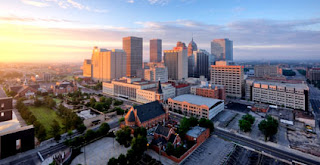A national survey of premiums lists the most expensive places to get coverage. Is where you live among the leaders of the pack?





By Des Toups, CarInsurance.com
Where you pay more for coverage
You can probably get the same deal, within a few dollars, on a new car in any of the 50 states. But you can't do the same for car insurance. In some states, you'll pay nearly three times as much for the same coverage on the same car, with the same driver. Here's a look at where rates are highest.
Our data from Quadrant Information Services sampled 10 ZIP codes and six carriers in each state, calculating rates on more than 2,000 new vehicles for a 40-year-old single male driver who commutes 12 miles. Coverage limits were $100,000 for injury liability for one person, $300,000 per accident and $50,000 for property damage, with a $500 deductible on collision and comprehensive coverage. The policy included uninsured motorist coverage.
These top 10 Highest car insurance rates by state
Michigan

Insurance on a 2011 model tops out at an average of $2,541 in Michigan, the highest rate in the nation. Its no-fault system provides what amounts to unlimited medical care, and about 19% of drivers were uninsured in the Insurance Research Council's most recent survey. "Driver responsibility fees" can add hundreds of dollars to the cost of keeping a driver's license, too.
Louisiana

Elected judges hear cases for accident claims under $50,000, and you don't get re-elected by being stingy, Louisiana car insurance experts say. That reality contributes to an average bill of $2,453 for a 2011 model car, second highest in the nation. About 13% of Louisiana's drivers were uninsured. Louisiana is one of several states with a "no pay, no play" law that limits damages uninsured drivers can receive.
Oklahoma

Wild weather and uninsured drivers forced rates for 2011 models in Oklahoma up to an average of $2,197, third highest in the nation. Hailstorms routinely pummel thousands of cars in a few moments, and their owners face decisions over whether to wait for the next time or file a claim -- if they have coverage, that is. Nearly one in four Oklahoma drivers is uninsured, the second-highest rate in the country.
Montana

Montana's a big state, and that means more miles and more risk. The cost of insuring a 2011 model averaged $2,190, fourth highest in the nation. Montana's fatality rate of 2.12 per 100 million miles driven is nearly twice the national average. About 11% of Montana drivers are uninsured. A caveat: The highways are wide open, but they do ticket, and the ticket will follow you home.
Washington. D.C.
Rates for full coverage in Washington, D.C., averaged $2,146 for 2011 models, fifth highest in the nation, and about 15% of District of Columbia drivers lack insurance, slightly above the national average. Even a bare-bones, minimum-liability-only policy on a beater car would set you back $1,172 a year.
California
California drivers pay an average of $1,991 a year to insure their 2011 models, the sixth-highest rate in the country. Rampant auto theft and a large population of uninsured motorists -- about 15% of all drivers -- push up rates for all. California does offer a low-cost program for low-income drivers, though.
Mississippi
The nation's poorest state, Mississippi, has the highest rate of uninsured drivers and the seventh-highest average premium for 2011 models, at $1,896. About 28% of drivers in the Magnolia State drive without insurance -- something that's illegal in every state except New Hampshire.
New Mexico

Premiums for 2011 models in New Mexico average $1,837 a year, eighth highest in the nation. The biggest factor? About 26% of state drivers don't carry insurance, the second-worst rate in the nation and the reason why uninsured motorist coverage is becoming more critical.
Arkansas
Arkansans pay an average of $1,836 to insure a 2011 model car, the ninth-highest rate in the country and well above the national average of $1,561. About 16% of the state's drivers are uninsured.
Maryland
In Maryland, the average premium for a 2011 model is $1,807, the 10th-highest rate in the nation. About 15% of Maryland drivers are uninsured, slightly above the national average.
Quoted from MSN
















